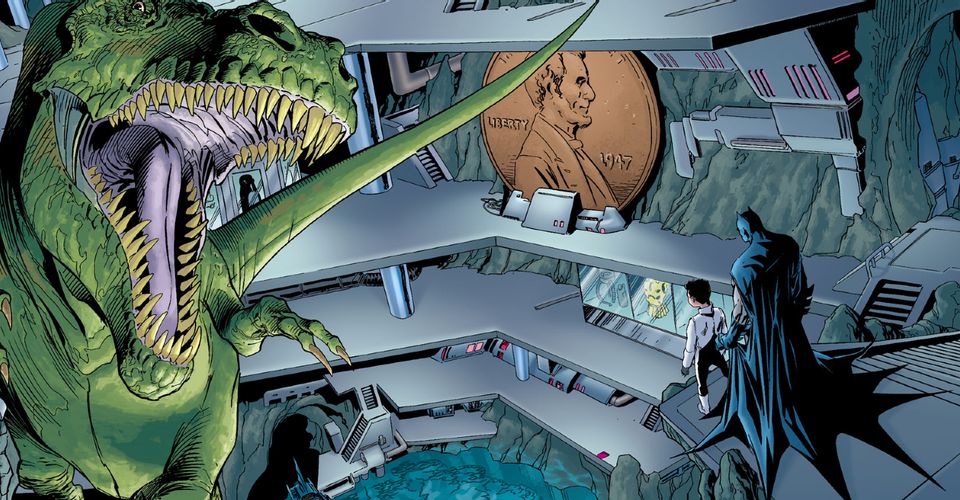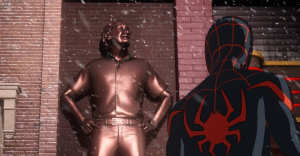Batman: The Changing Origin Stories Of The Batcave Explained

Imagine yourself in a dark space. The room is cool, water pools near your feet, while the ceiling towers hundreds of feet overhead where bats twist and swirl in the darkness. The cavern is beautiful, ancient. It’s possible that someone has been there before you—maybe ancient people seeking shelter, animals looking for warmth, and curious people such as yourself. Imagine yourself standing in the shadow of stalagmite in the magnificent cavern, turning and seeing a massive, oversized penny and a life-size T-Rex robot. This is Batman’s cave.
The Batcave has appeared in Batman comics for almost as long as there have been Batman comics. First appearing in 1942, the Batcave was less cave and more underground bunker meets garage for Batman’s growing collection of wild and bat-themed vehicles. Slowly, Batman “built” his cave, expanding the space and creating tunnels from his home at Wayne Manor, to a nearby barn, and to some cellars of nearby empty buildings. Inside, rooms for cars, cases, interrogation, and crime-fighting trophies were added—hence the afore-mentioned giant penny and robot T-Rex.
In 1954, Detective Comics #205 did a little bit of retconning by telling readers about the “amazing mystery behind the origins of the Batcave.” No longer created or carved out by Batman himself, instead Batman tells Robin that he discovered the cave after he bought Wayne Manor, along with a bit of pottery. When Batman and the Boy Wonder go back in time to solve the mystery themselves, they meet Jeremy Coe, a man using the Batcave as his own secret headquarters—this time for acts of espionage against local Native American tribes. There’s a lot of baked-in racism in this specific origin story that certainly doesn’t hold up, and this particular story would last until 2010.

Batman: The Return of Bruce Wayne presents a similar origin story for the famous Batcave, this time involving the actual pirate Blackbeard and a fictional pirate simply named Black Pirate. When Blackbeard tries to navigate his way through the future Batcave while seeking the bat-worshiping Miagani tribe’s treasure, he encounters the mysterious Black Pirate and the mystical cloak of their deity, aka the cape Batman left behind when he did some previous time traveling. It’s interesting to see the origin of the Batcave looping back towards time travel, with the inclusion of a fictional Native tribe that the comic treats at least slightly better than the original turn of this story.
Of course, when people think of the famous Batcave, they don’t think of time travel and racist depictions of indigenous people, but of a young Bruce Wayne stumbling into a pit full of bats, as detailed in comics like 1990’s Secret Origins of the World’s Greatest Super-Heroes. That swirling mass of bats was what put the fear of God in Bruce Wayne and inspired him later in life to put the fear of God in Gotham’s criminals.
The Batcave has seen many changes over the years—shifting from garage to cave, with moving secret entrances, various attempted attacks and takeovers and a few makeovers after things got smashed fighting the baddie of the week. But its weird and wonderful origins have become modern mythology.
Caves are filled with beauty and terror, with sudden drops and tight squeezes. It’s no wonder that a character so focused on fear and so obsessive over the little details (including, apparently, maintaining his aesthetic in his off hours) would gravitate towards such dark, dank places as a home base. Regardless of their beauty, however, it’s probably best if readers leave the spelunking to Batman and company, and enjoy the Batcave from the safety of comic books.
About The Author


















